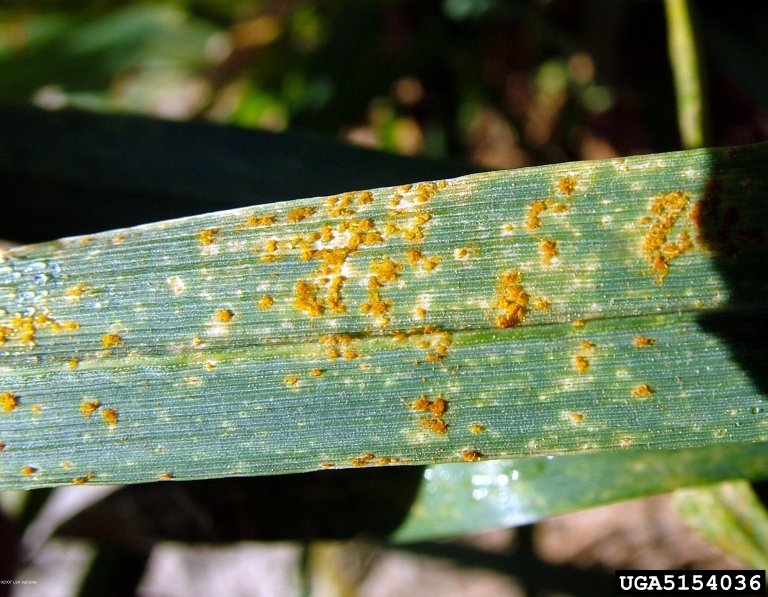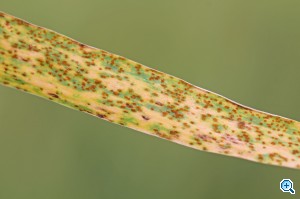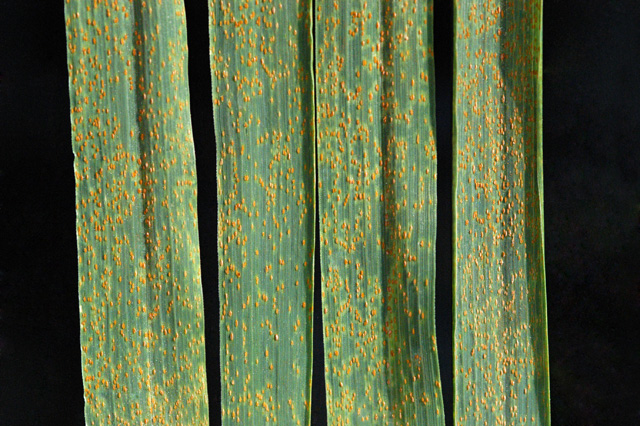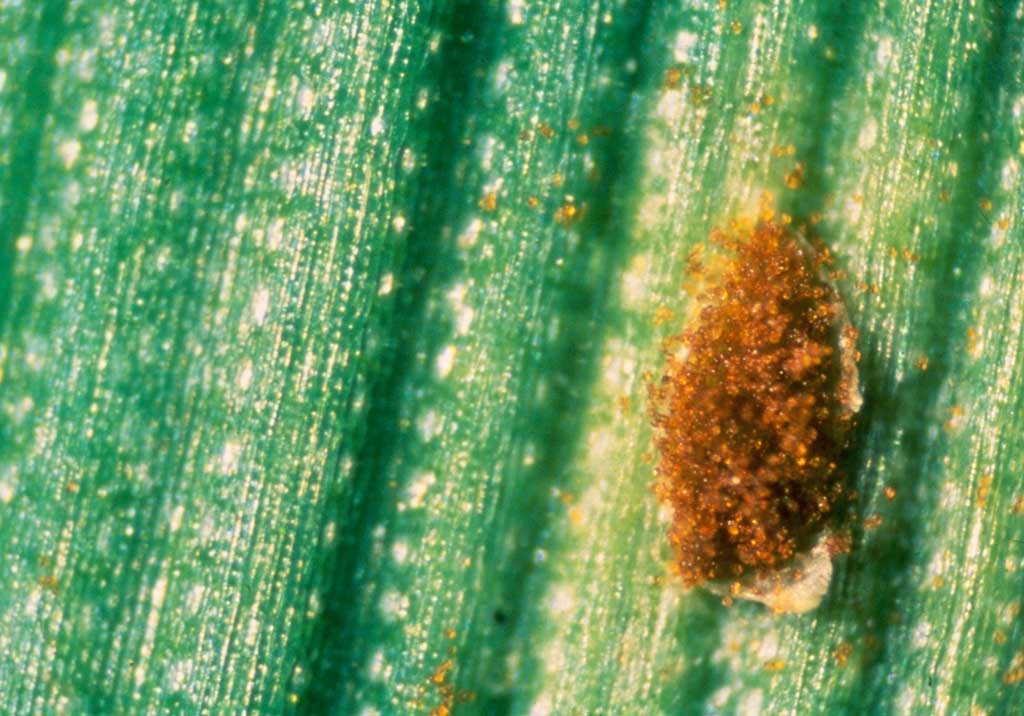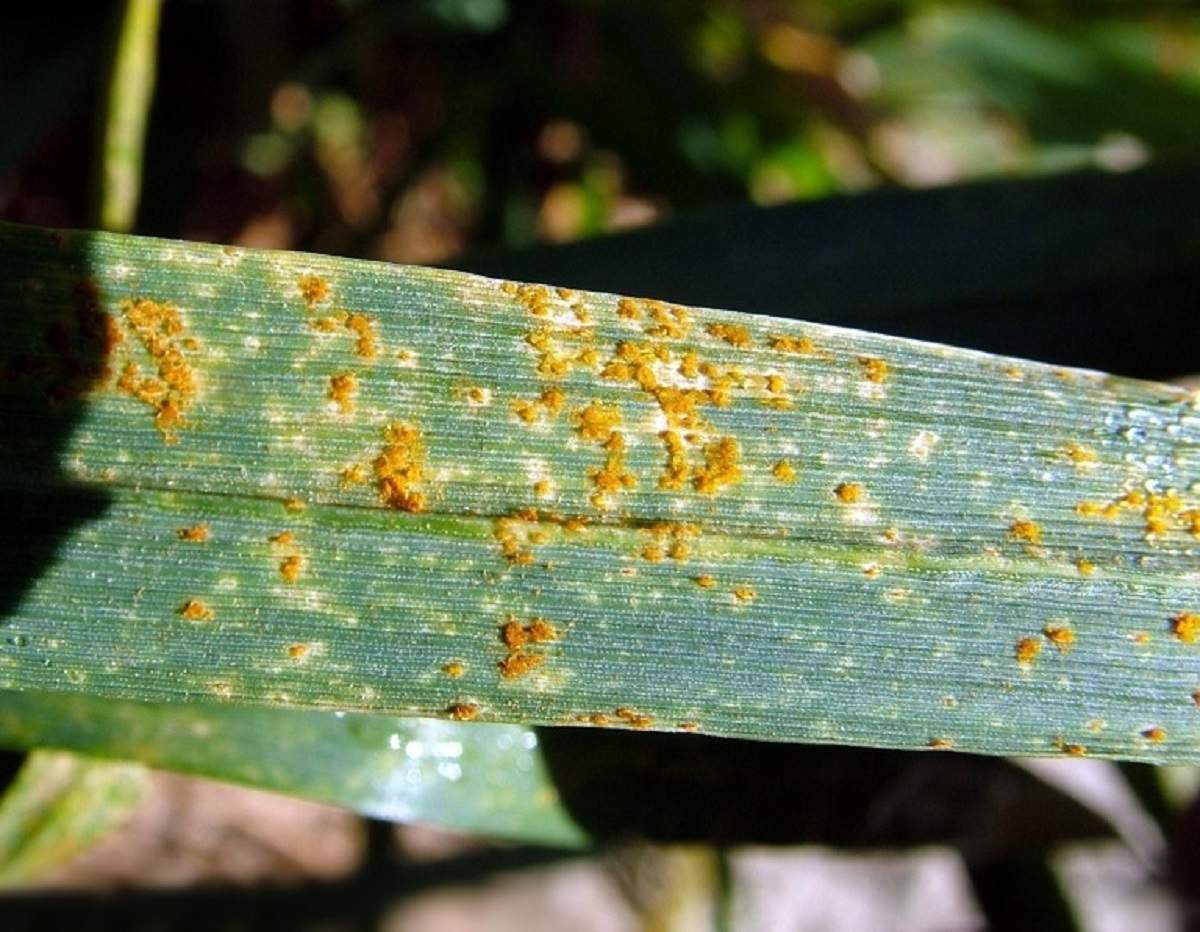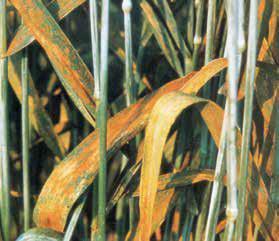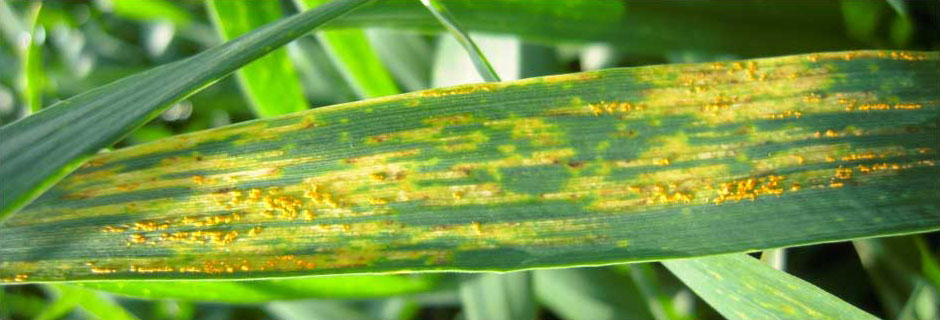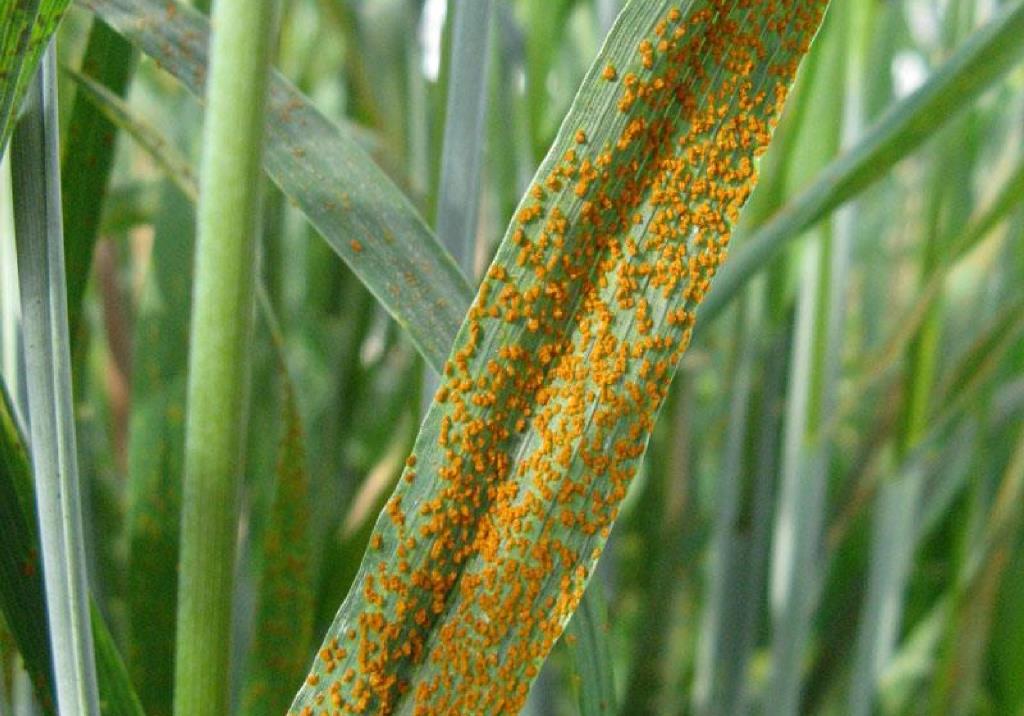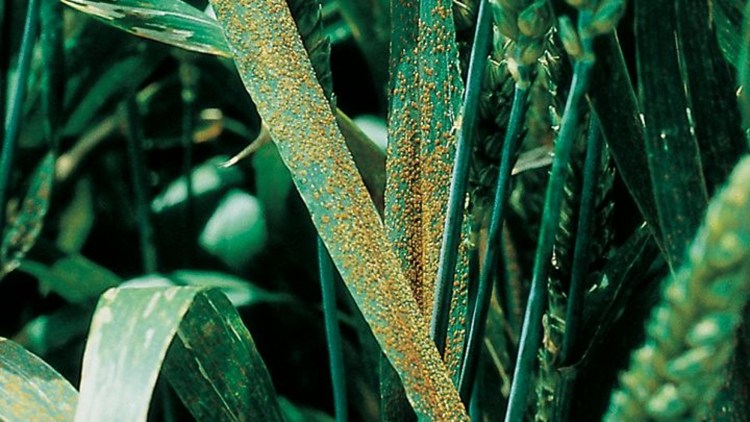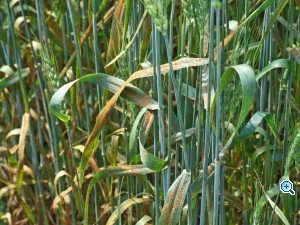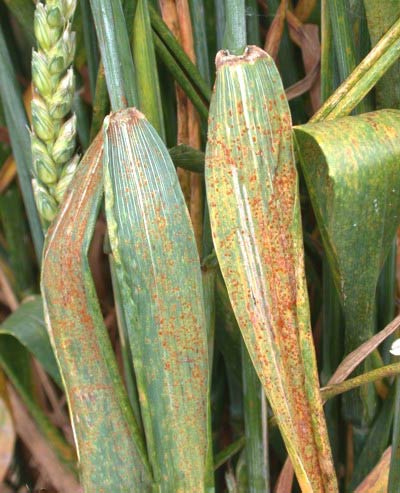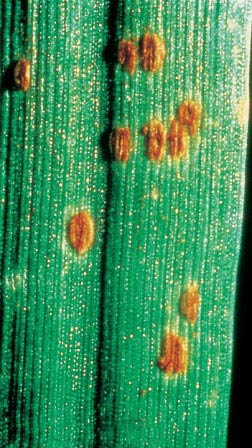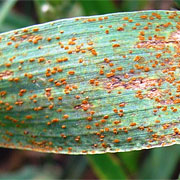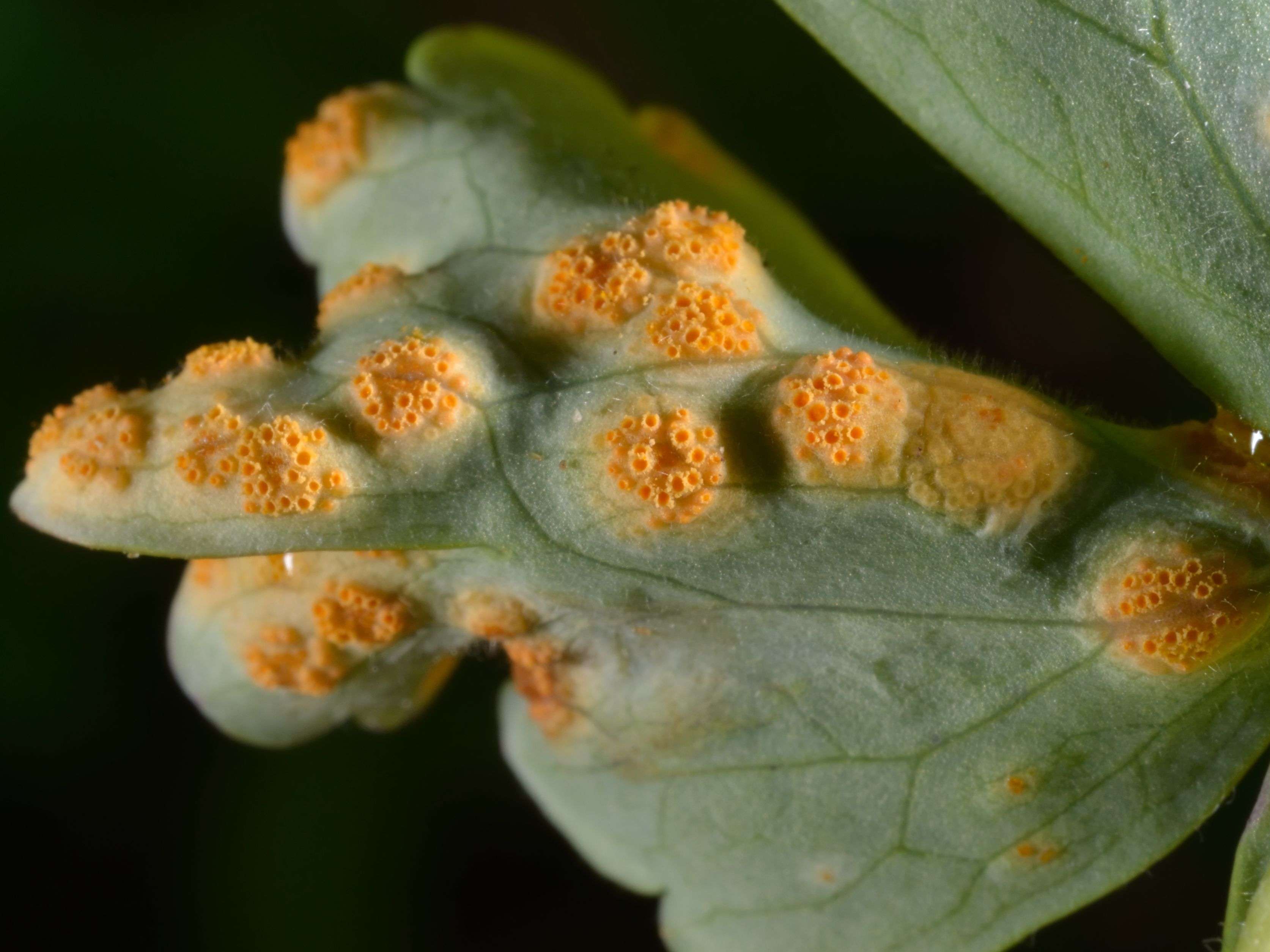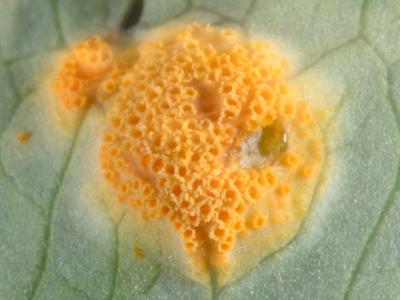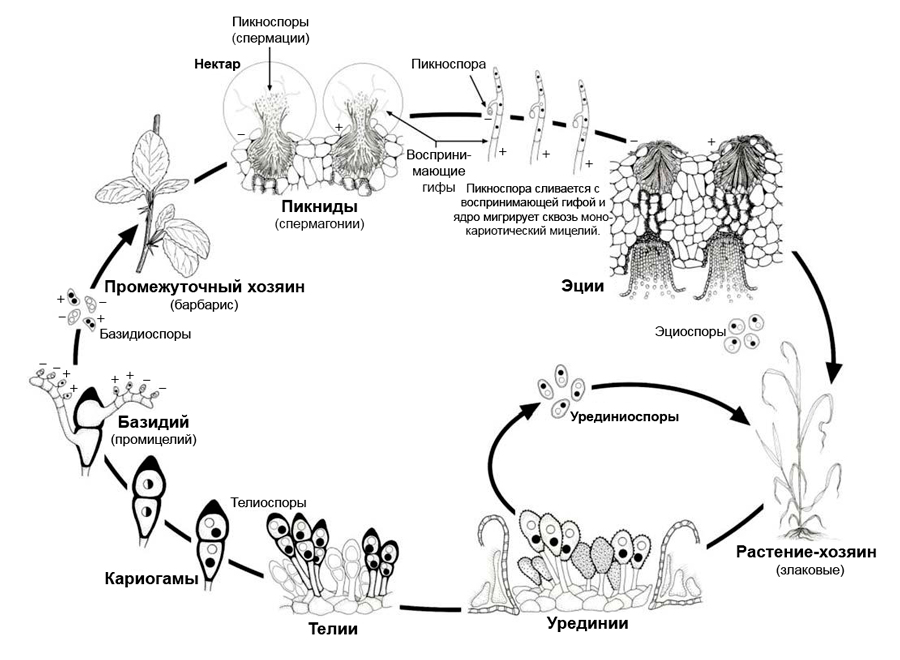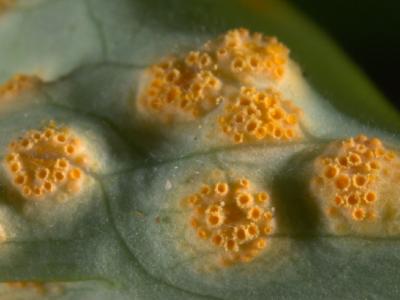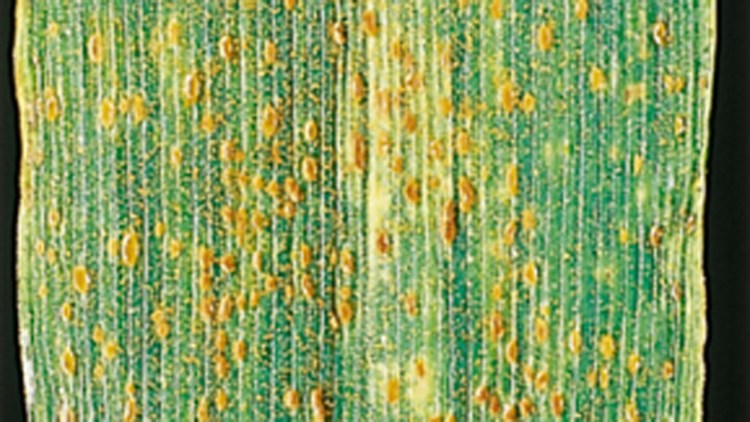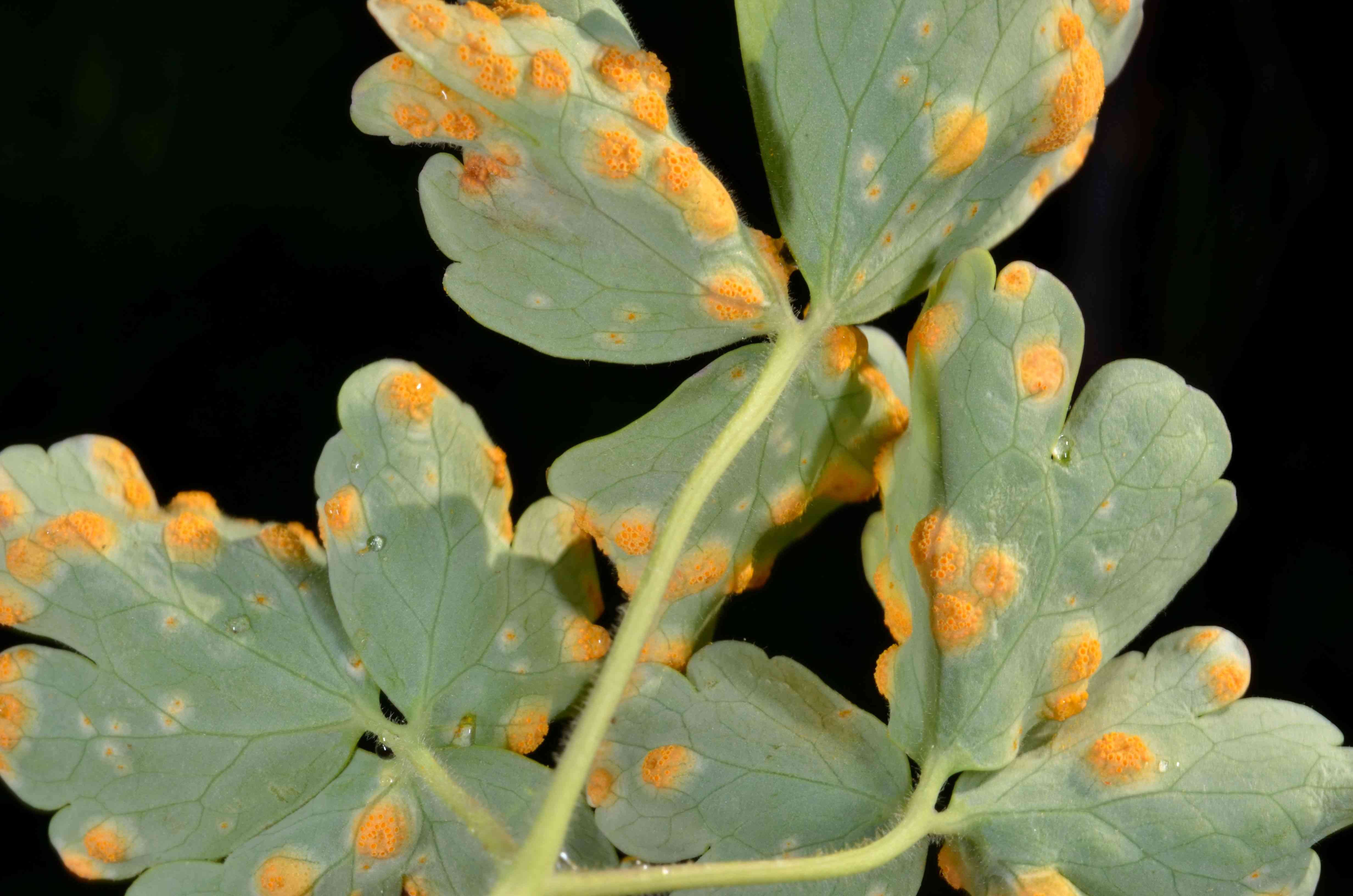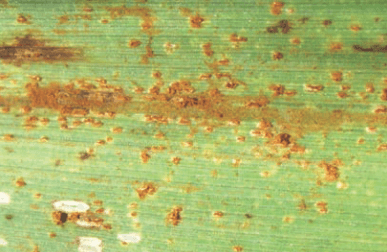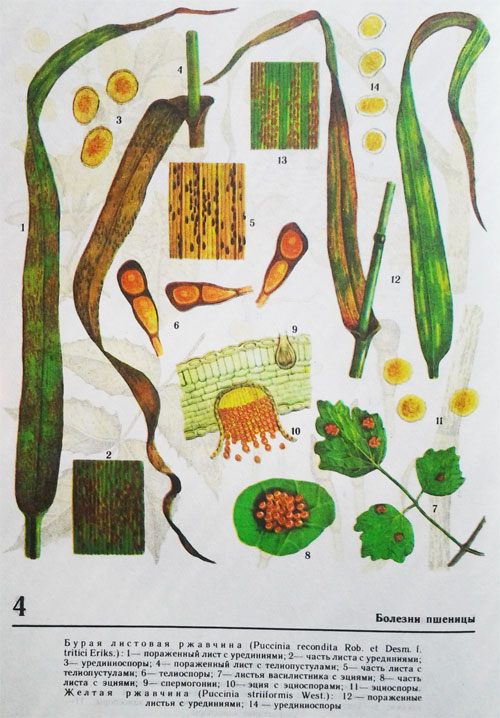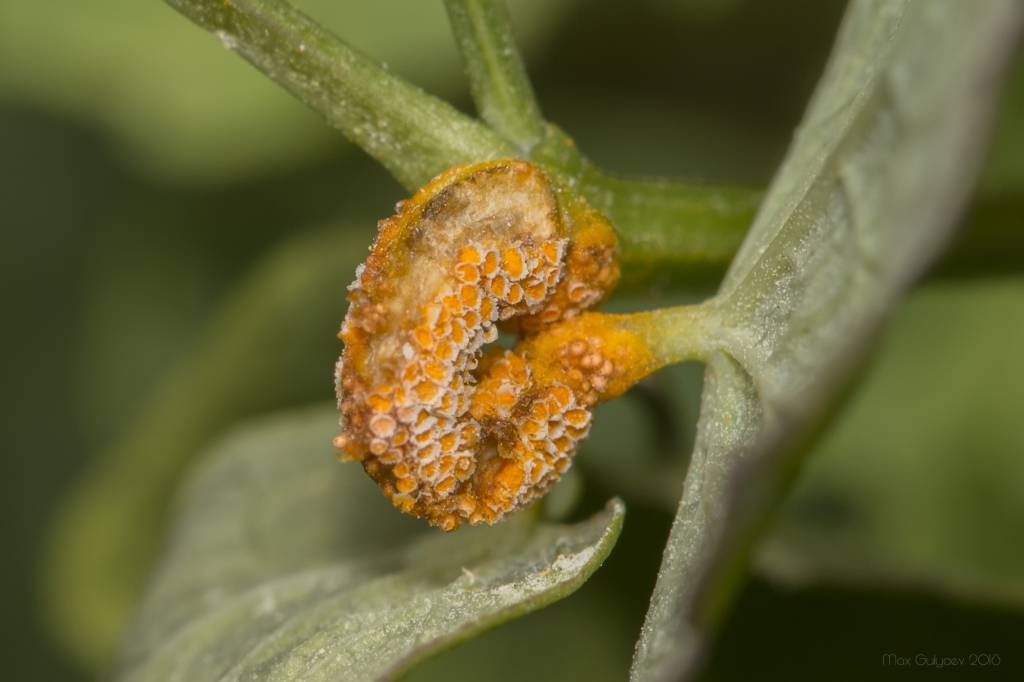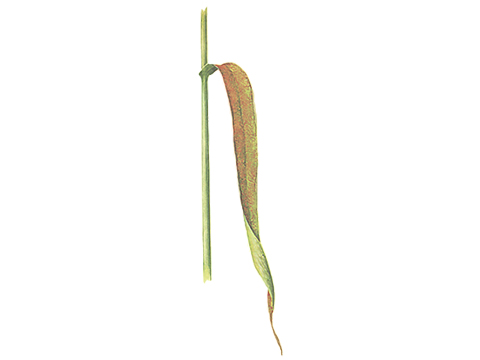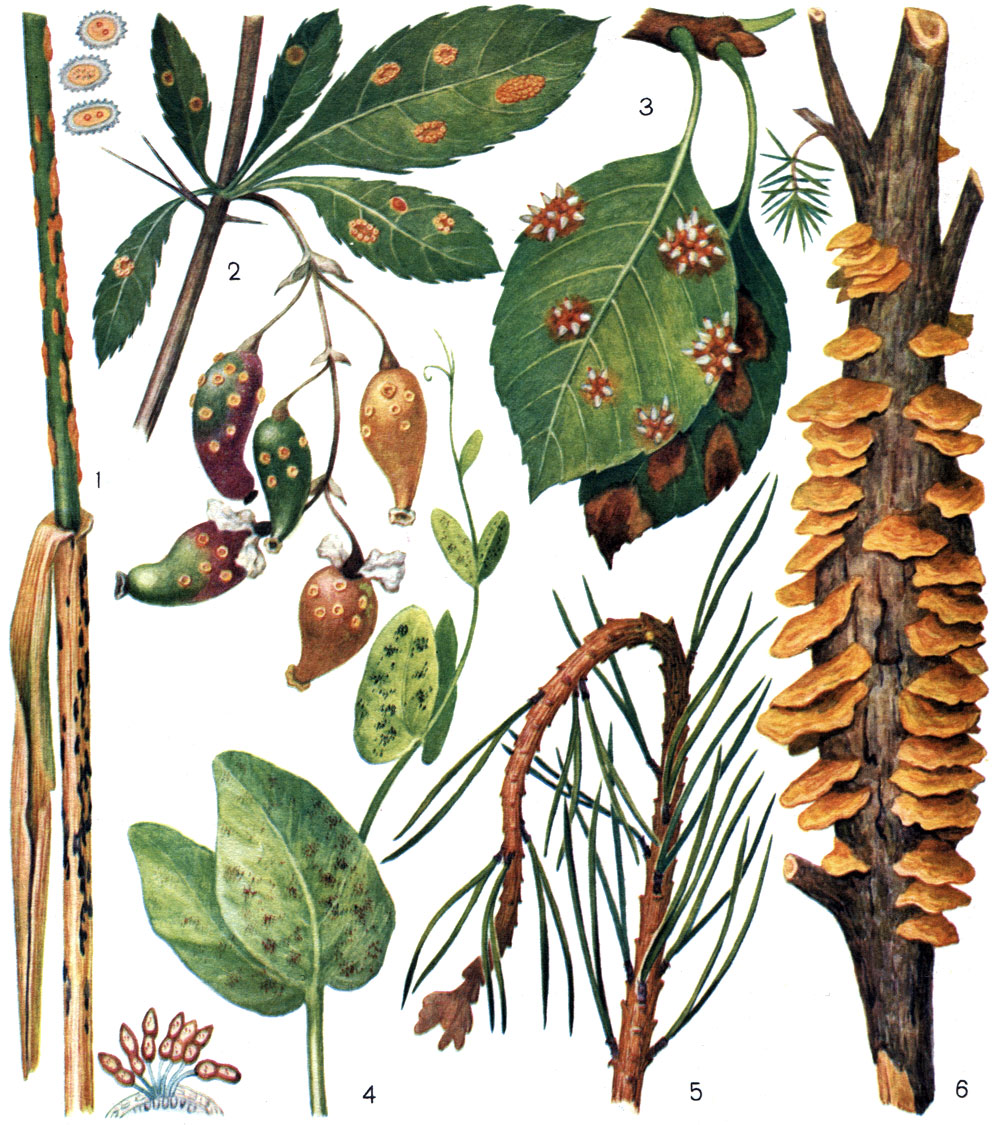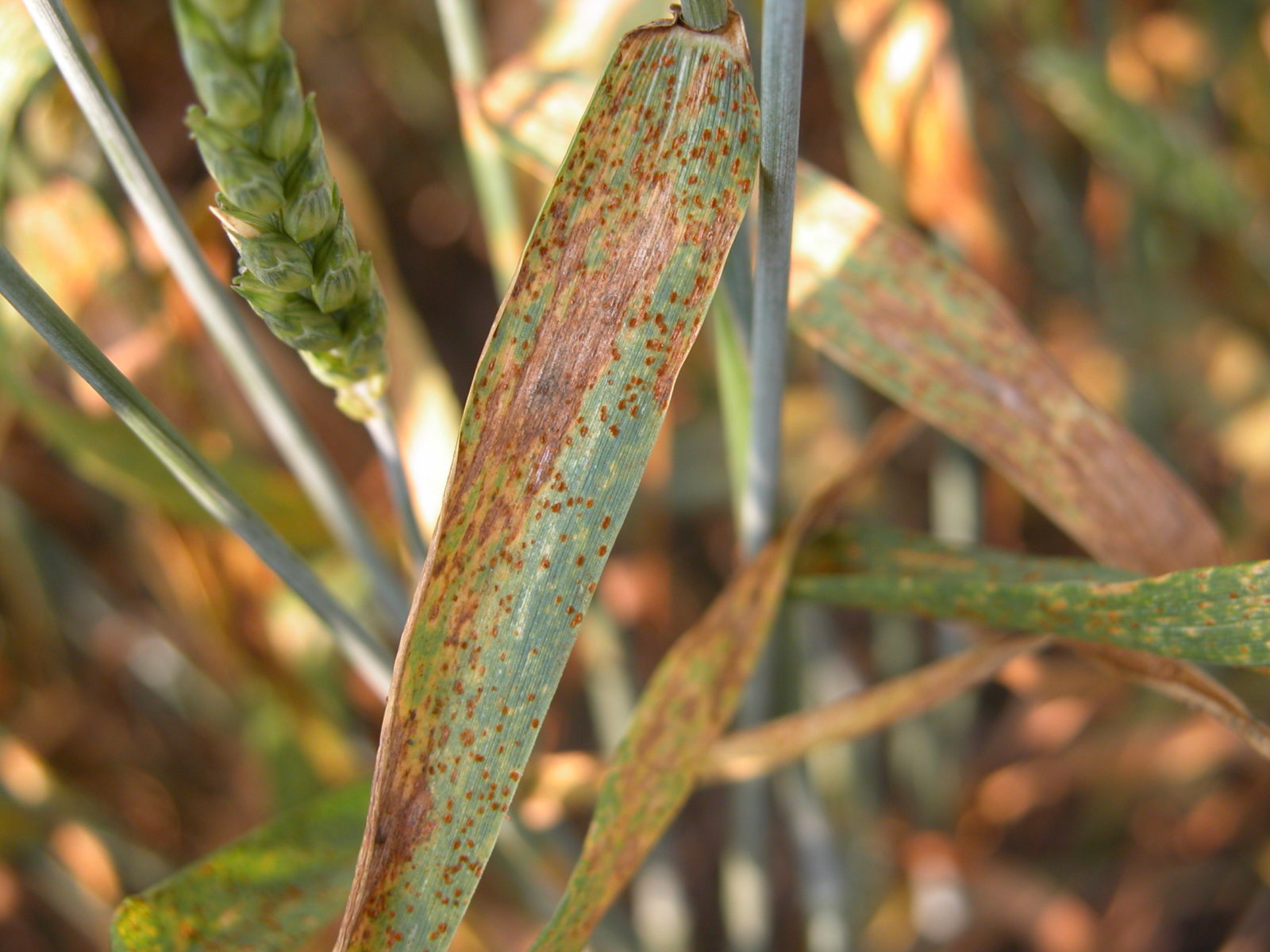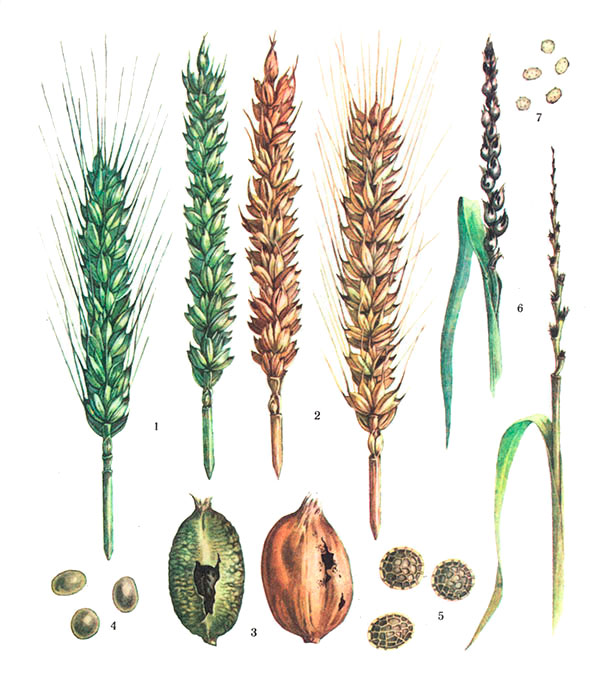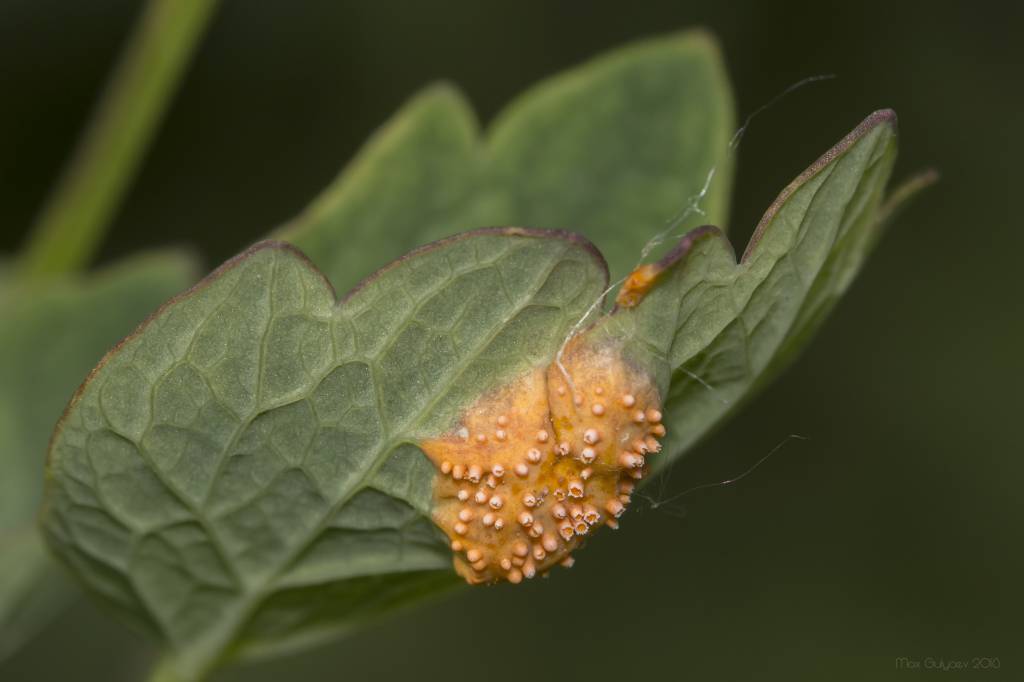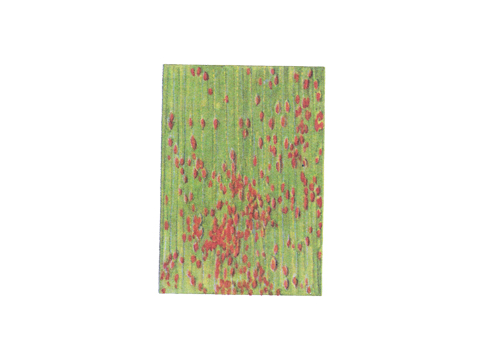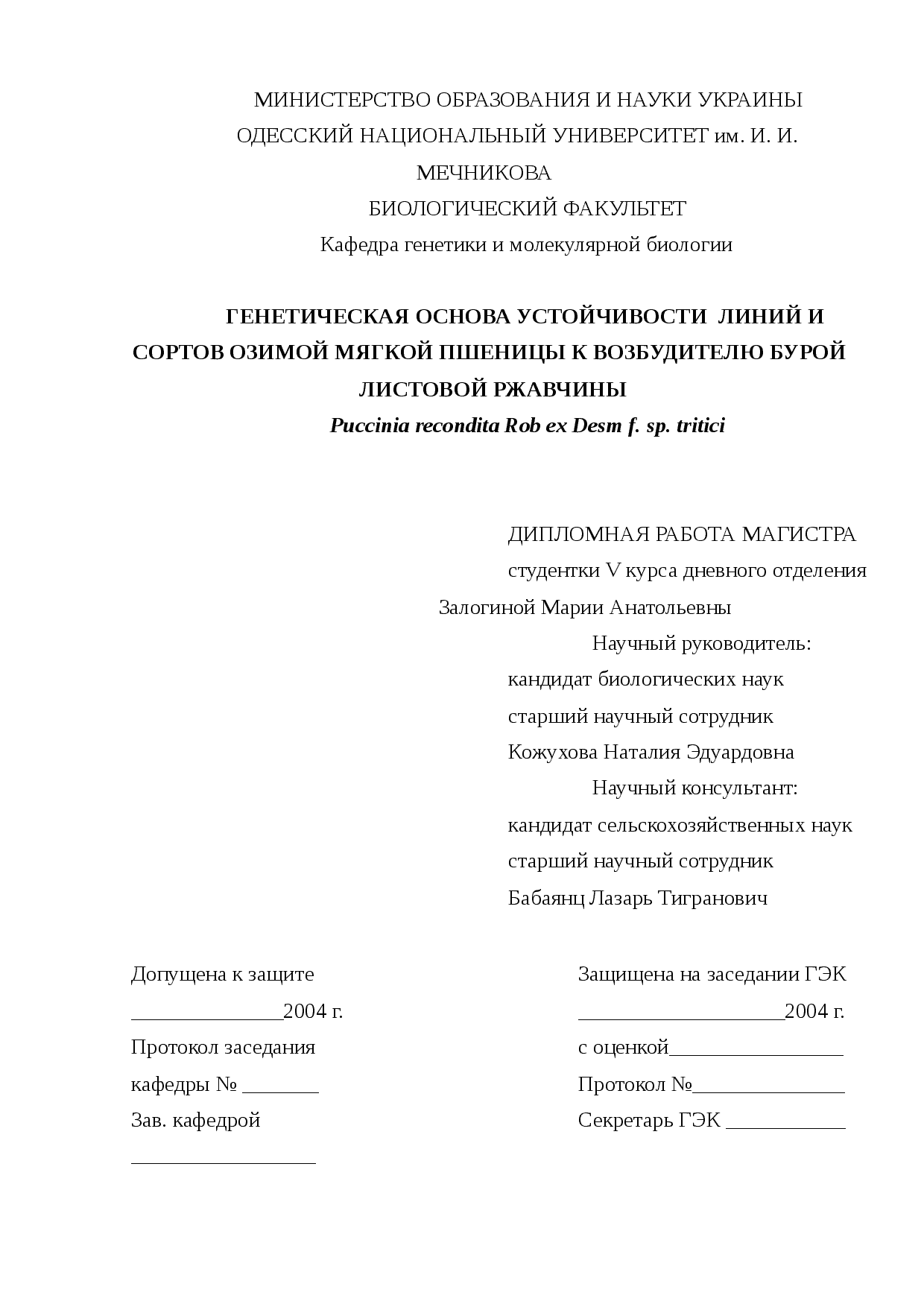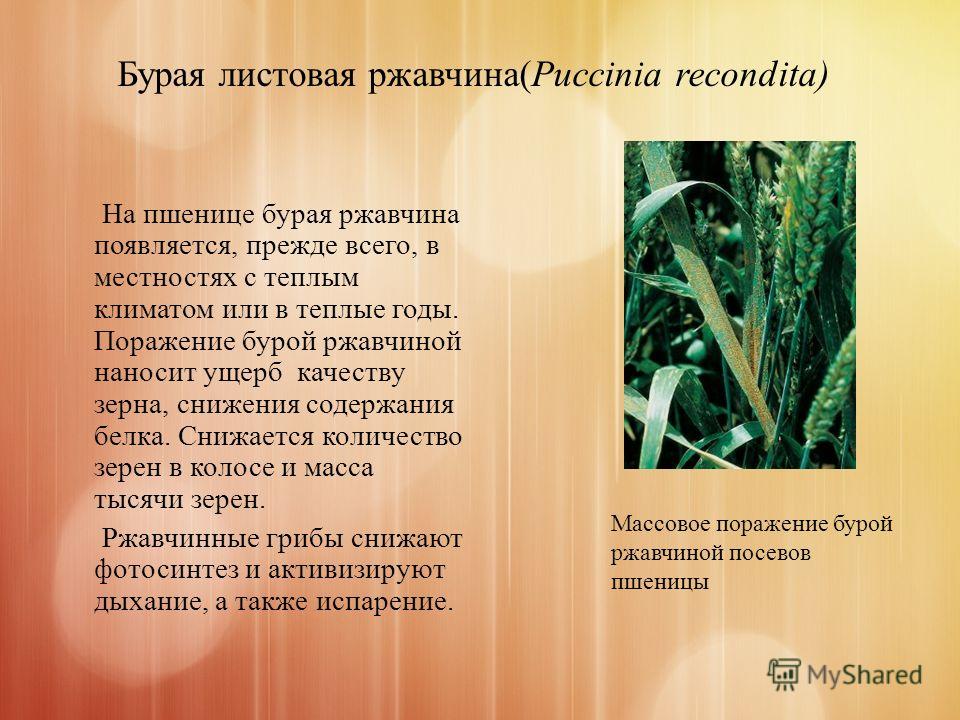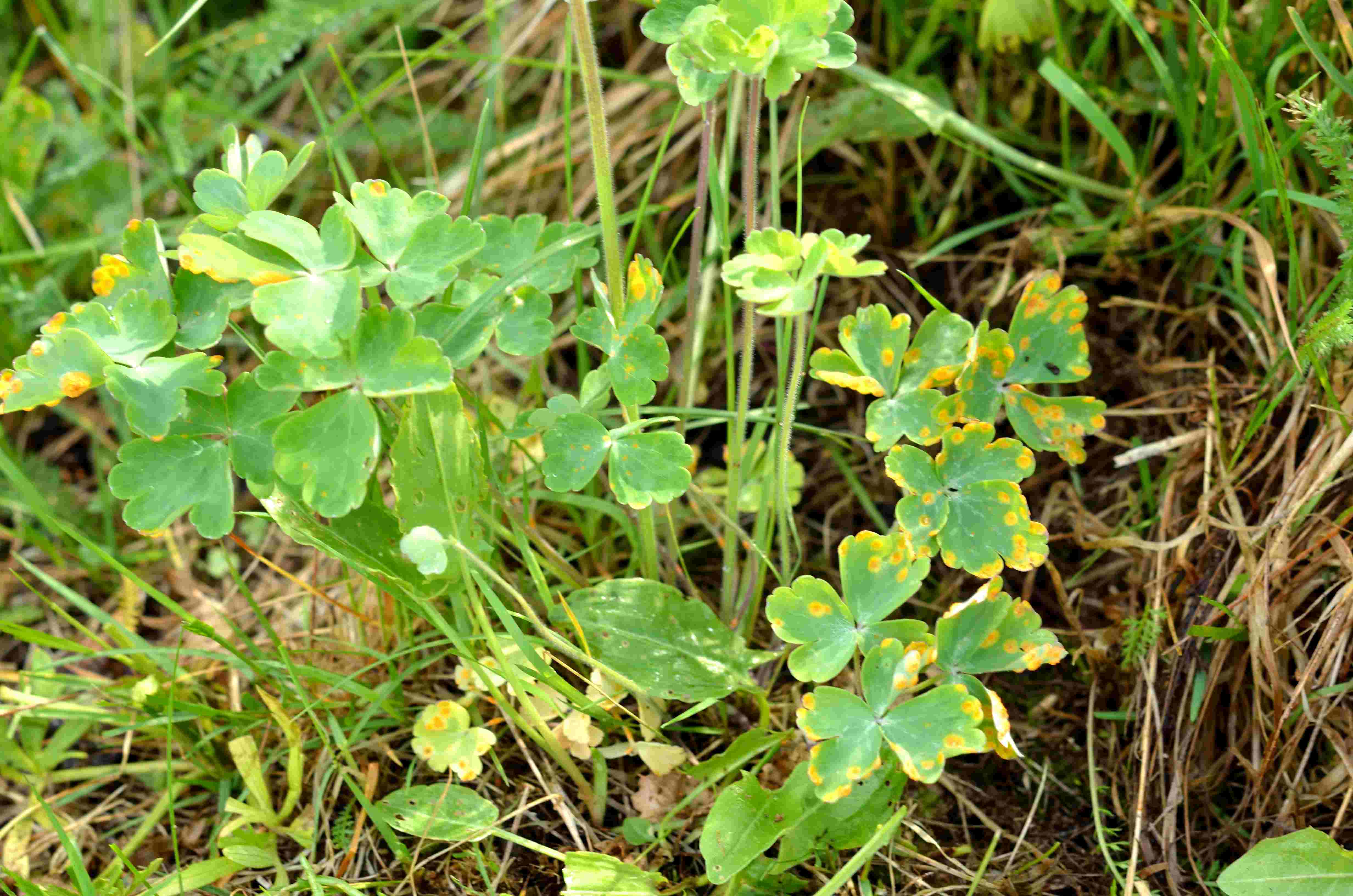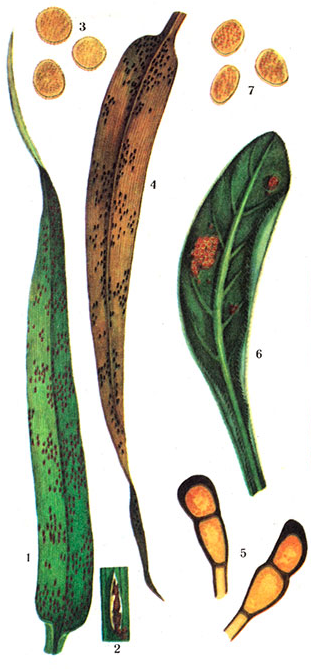Diseases of forage legumes
Cancer. The causative agent is Sclerotinia trifoliorum, department of Ascomycot.
Symptoms: in the spring, during the regrowth period, the leaves of diseased plants acquire a silvery hue. On the decaying organs, an airy white mycelium and black tuberous sclerotia are formed. The root collar and roots turn brown and become watery. The aerial part is easily detached from the roots.
Sources of infection: mycelium on plants and sclerotia in the soil, scraps of mycelium spread.
Fusarium. The causative agents are fungi of the genus Fusarium, Department of Deuteromycot.
Symptoms: Dark brown dry or wet rotting spots on the top of the main root or on the lateral roots. The core part of the root is destroyed, becomes rotten, the plant dies. In the cross section, the browning of the vessels is noticeable. With increased humidity, a pinkish-white fluffy bloom and whitish, pale pink mucous pads appear at the base of the affected stem. Sources of infection: persistence of chlamydospores and sclerotia in the soil.
Anthracnose. The causative agent is Colletotrichum trifolii, Department of Deuteromycot.
Symptoms: streaks and dark spots on shoots, cotyledons and young stems. On adult plants, reticulation, which later gives way to brown spots. On stems and leaf petioles there are dark, slightly depressed striae that grow into oblong brown ulcers with a black border.
Sources of infection: conidia and mycelium on plant debris and seeds, spread by conidia with water, wind.
Rust. Pathogens: on clover - single-host Uromycesfallens, on alfalfa - Uromyces striatus with milkweed as an intermediate host, Basidiomycot division.
Symptoms: Bright orange ecias form on the underside of the clover leaves. By the beginning of flowering, brownish urediniopustules are formed. At the end of the growing season, black-brown teliopustules are formed. Sources of infection: with clover rust of uredinio- and teliospores on plant debris and living leaves, with alfalfa rust - mycelium in milkweed rhizomes, urediniomycelium on wintering alfalfa.
Powdery mildew. The causative agent is Erysiphe communis, f sp. trifolii on clover and f. sp. medicaginis on alfalfa, department of Ascomicot.
Symptoms: white powdery bloom on leaves, stalks and stems of plants in the second half of summer. Sources of infection: cleistothecia, mycelium, spread by conidia by the wind.
Brown spotting. The causative agent is Pseudopeziza medicaginis, department of Ascomycot.
Symptoms: brown, rounded spots with jagged edges appear on the leaves. On stems, petioles and beans - oblong brown spots. In the center of the spots, brown wax-like tubercles - apothecia develop. Sources of infection: apothecia and pycnidia on diseased plants, spread by conidia with rain, wind.
Bacterial wilting. Caused by several types of bacteria, most often Clavibacter michiganensis pv. insidiosus.
Symptoms: diseased plants have inhibited growth, chloroticity. Darkening and necrosis of blood vessels are noticeable on the cross section of the stems and roots, on the longitudinal section there are brown streaks or stripes in the conducting system. It is stored in the tissues of perennial plants.
Clover phillodies. The causative agent is Candidatus phytoplasma trifolii phytoplasma.
Symptoms: flowers in inflorescences grow and turn into leaves, witch brooms are formed, plant dwarfism. No seeds are formed. It is stored in the tissues of perennial plants.
Alfalfa mosaic. The causative agent is the Alfalfa mosaic virus. Diseased plants with depressed growth, chlorotic. Greenish-yellow mosaic on the leaves, deformation. Narrow necrotic stripes at the edges of the leaves. It is preserved in the tissues of perennial plants, it is transferred by different types of aphids, with seeds.
Dodder clover and alfalfa. The causative agent is Cuscuta trifolii, C. campestris, C. epilinum. Dodder stems, like a thick wire, twine around the stems and leaf stalks of clover and alfalfa plants. In places of contact with the plant, suckers are formed on the stems of the parasite plant. Stems can be reddish, pink, yellow, greenish with a pink tinge, their thickness is 0.8-2.5 mm.Dodders cause metabolic disorders in host plants, weaken and retard their growth and development, contribute to a decrease in crop yield and its quality, as well as winter hardiness. Distribution occurs with seeds of cultivated plants, animals, machines, water, wind, manure, planting material, etc.
Biology
The causative agent of brown rust is an obligate parasite and a fungus of various households. For nutrition and reproduction, the living tissue of the host plant is required for it all year round. The massive development of the disease is observed during the summer months. It is at this time that uredosoruses develop on the leaves and sheaths. Urediospores give several generations over the summer and are capable of causing a massive defeat of rye. By autumn, teliospores are formed on the lower part of the same leaves. They germinate almost immediately after formation and infect the intermediate host with basidiospores. Spermogonia and etsidia of rye rust develop on weeds of the borage family - medicinal blush, crooked flowers and some others.
The pathogen usually hibernates on rye in the form of a mycelium. At the same time, urediospores remain viable. Thus, the fungus is able to develop in an incomplete cycle. In this case, only the urediniostadia develops. Other stages are not essential in the development of the fungus. With the mass formation of urediospores, neither teliospores nor ecidiospores play a significant role in the development of the pathogen, since the main source of spring renewal of brown rust is winter rye crops infected with urediospores and uredomycelium since autumn.
The pathogen multiplies over a wide temperature range. For the formation of epiphytotics, the pathogen first of all needs warmth. The development of infection is favored by days with active solar radiation at a temperature of + 20 ° C - + 26 ° C in combination with warm nights (optimally + 15 ° C), precipitation or dew in the evening (plant moistening for at least four hours in a row).
A dangerous spike in reproduction is usually observed in the fall after earing. Winter crops can be infected from the fall with mycelium and spores. In spring, the transfer of urediospores over considerable distances by air currents is possible.
A large number of infected plants with successfully overwintered uredomycelium at warm temperatures in spring and autumn can be the reason for the active development of the disease, especially in rye varieties that are not resistant to the pathogen.
Biology
Species of the genus Puccinia are obligate parasites with a narrow specialization. Like all fungi of the order Rust, they have a complex development cycle, which includes several successive sporulations, ending in the formation of dormant spores - teliospores. Species of the genus can be of different hosts, that is, capable of developing in one stage on one plant species, and in other stages on another. There are single-host rust fungi. The full development cycle includes all types of sporulation. Many species lack one or several types of sporulation, that is, they develop in an incomplete cycle. In particular, Puccinia recondita, the causative agent of wheat brown leaf rust.
The complete development cycle consists of three stages and five sporulation.
The first stage is social (spring). At this stage, two types of sporulation are formed: sperm in spermogonia and eciospores in ecias.
The second stage is urediniostadiya (summer). In it, urediniospores develop in uredinia.
The third stage is the teliostage (winter). During this stage, teliospores in teliopustula and basidiospores are formed. The former are responsible for the preservation of the pathogen during the winter period, the latter for the primary infection in the spring. In some species, teliospore germination, basidiospore formation and plant infection at the end of the growing season are observed.
Biology
The sperm stage is formed in spring on the leaves of barberry and magonia. (Peresypkin V.F., 1989)
Etcidial stage. Ecia are formed on the lower leaf blade of barberry, 2 - 5 days after the appearance of spermogonia.Etsidiospores scattering fall on cereals. Germination is observed in the presence of drop-liquid moisture and temperature conditions from +5 to +24 ° C. (Peresypkin V.F., 1989)
Urediniostadia. Urediniomycelium is formed in the places where the ecidiospore is introduced. For germination of urediniospores, drip-liquid moisture and a temperature of +1 to + 30 ° C are needed. The optimum lies in the range of + 18 + 20 ° C. During the growing season of the host plant, the fungus is able to give several generations. (Peresypkin V.F., 1989)
TV station. Teliopustules are formed at the end of the growing season in places where uredinia develop. They overwinter in plant debris. Germinate in spring at temperatures from +9 + 29 ° C. Optimally +18 + 22 ° C, with a humidity of 95 - 100%. (Peresypkin V.F., 1989)
Basidial stage. Basidiospores are formed from teliospores. Scattering and falling on barberry or mahonia, they contribute to the formation of spermogonia and ecias of the next cycle. (Peresypkin V.F., 1989)
The article was compiled using the following materials:
State catalog of pesticides and agrochemicals approved for use on the territory of the Russian Federation, 2016. Ministry of Agriculture of the Russian Federation (Ministry of Agriculture of Russia) & nbspDownload >>>
2.
Dobrozrakova T.L. Agricultural Phytopathology, 2nd ed., Rev. and add. Edited by M.K. Khokhryakova, Leningrad: ed. "Kolos", 1974 - 382s.
3.
Dorofeeva L. L., Shkalikov V. A. “Diseases of grain crops”, Moscow, OOO NPF “SCARABEY”, 2007 - 22
4.
Peresypkin V.F. Agricultural phytopathology, 4th ed., Revised. and add. - Moscow: Agropromizdat, 1989 .-- 480 p.
5.
Prigge G., M. Gerhard M. I. Habermeier I., Edited by prof. Yu.M. Stroykova, Fungal diseases of cereals, Joint publication of the agricultural publishing house Landwirtschaftsferlag Münster-Hiltrup and BASF AG, Limburgerhof, 2004 - p. 195
6.
Stancheva J. Atlas of diseases of agricultural crops. Part 3. Diseases of field crops. Translated by G. Danilova, editors Vasyutin A.S., Shirina L.V., Kulich O.A., Sofia-Moscow, ed. Pensoft, 2003 - 175 p.
7.
A.A. Fedorov (ed) Plant life in six volumes. Volume 2. Mushrooms. Red Gorlenko M.V., Moscow: Publishing house of education, 1976 - 479 p.
8.
Shkalikov V.A., Beloshapkina O.O., Bukreev D.D. Plant protection against diseases, 2nd ed., Rev. and add. - M .: Kolos, 2003 .-- 255 p.
Images (reworked):
9.
Benada J. Atlas of diseases and pests of grain crops. A team of authors led by J. Benada, I. Shediva, J. Shpachek. Artist F. Severa. - Prague: State Publishing House of Agricultural Literature, 1968. - 200 p., Ill. Illustrations from the book.
Collapse
List of all sources
Causes of occurrence
The main reason for the widespread rust infection of wheat is the high viability of fungal spores and their rapid and widespread prevalence.
Sources of infection and favorable conditions for development
The sources of the spread of the disease are plant debris, infected weeds or forage grasses and intermediate, in particular basilis, hazel. Additional foci of infection can be infected rye, barley, bluegrass, meadow fescue and other wild grasses. Also, spores are carried in by gusts of wind from distant highly infected crops.
On the infected stubble, not only stem and leaf spores survive the winter, but also many other types of rust, which in the spring cause a new wave of the disease.
Favorable conditions for the fungus also contribute to the spread of rust:
- The presence of an infectious background (carrion, infected stubble, plant residues, etc.).
- Early sowing of winter wheat and late sowing of spring wheat contribute to the development of stem rust.
- Application of high doses of nitrogen fertilizers.
- Cool and humid weather in August and September, mild winters, cool springs and first decade of summer.
- Intense precipitation in the first half of the growing season and during the earing season.
- The presence of drip moisture (dew or evening rains).
- Density and contamination of crops with cereal weeds.
Wheat rust fungus is capable of infecting crops over a wide temperature range - from + 2 ° C to + 30 ° C. The maximum rate of development and spread of the disease is observed at + 15 ... + 24 ° C.
Geography of distribution
The fungus is ubiquitous, so the cultivation of wheat is always fraught with the danger of mass contamination of crops. In the northern regions and in Siberia, where the summer is not so hot, the spores persist better, therefore, the danger of the disease increases.

Linear rust of cereals is especially common in regions with humid, warm climates. The most affected regions are the North Caucasus, the Far East, the Baltic States, Western Ukraine and Belarus.
Wheat leaf or brown rust is found in all regions where there are wheat fields.
Factors contributing to the mass infection of wheat with rust.
There are four main factors: The first and decisive factor is the infectious origin. The presence of an infectious agent, which is also called an infectious load, is an essential stage in the life of a rust pathogen. Rust is a polycyclic disease in which up to ten generations of spores form during the growing season. A huge number (billions) of rust spores determine the explosiveness of this disease.
For example, if on winter crops we have a large number of autumn or the edge of summer spores, then in the next period of the new year in the spring and further in the summer we will get an explosive development of this disease. The role of spores is reduced to this - in the role of the infectious origin of rust diseases.
The second factor is the degree of susceptibility of grain varieties reanimated in a given locality or zone. An example should be given here: Modern agricultural producers like to use productive varieties of cereals, while they often forget about the zone in which they are reanimated. This leads to the problem of increasing the susceptibility of these varieties to rust disease.
The third factor is the period of primary infection of agricultural plants with spores of the rust pathogen. Accordingly, the earlier this infection occurs, the more the development of the disease is manifested and the greater the loss of grain yield from a rust disease.
The fourth factor is weather conditions. It is of fundamental importance for both classical and modern predictive systems, i.e. systems that predict the development of rust on cereals, as well as the development of diseases on a wide variety of crops.
The most important factors are temperature and humidity. together they determine the so-called hydrothermal coefficient.
A specific example can be given: So the development of brown rust occurs at a temperature of 18-23 degrees, the development of stem rust - at 18-20 degrees, and the development of yellow rust occurs at slightly lower temperatures, about 15 degrees Celsius.

Control methods
There are three main ways to combat this disease.
Biological
These methods of protection are absolutely harmless from the point of view of ecology (as opposed to chemical ones). List of actions:
- Creation of rust resistant varieties by specialists.
- Analysis of samples of plants and soil from an infected field to identify a specific strain of pathogens and the selection of appropriate fungicides.
- Population of the soil with beneficial microflora using microbial preparations "Fitostim", "Agrovitastim".
- Measures for the decomposition of infected plant residues using the bacterial preparation "Stimix", which suppresses the pathogenic microbiota, preserving all the valuable trace elements of the stubble in the soil.
- Regular monitoring by analyzing samples of soil microflora for the timely prevention of fungal infection.
At the initial stage of the development of the disease, it is necessary to spray crops with biological preparations "Planriz" and "Agat".
Agrotechnical
The main measures to combat rust:
- Destruction of sources of infection.
- Spatial isolation of spring and winter wheat crops. Infected winter crops are the focus of the disease, from where it spreads to spring crops.
- Replacement of varieties with more resistant ones: wheat Timofeeva, Bezostaya 1, Bezostaya 2, Caucasus.
- The introduction of additional doses of phosphorus-potassium fertilizers for grain crops, which increase the resistance of the crop.
- Top dressing, accompanied by loosening the row spacings, is effective for planting health.
- Optimal sowing dates for spring and winter wheat. In the European part of Russia, the best results are obtained with early sowing of spring crops (more often in April), when the soil warms up to + 5 ... + 6 ° С. For winter wheat, favorable conditions for sowing come when the average daily air temperature is set at + 14 ... + 15 ° С (approximately from September 25 to October 5). In this case, the plants have time to go through the early stages of development in conditions unfavorable for rust.
- Timely grain harvesting. At later stages, overripe grain, in which infected specimens may be, spills out of the ears and remains on the soil, and in the spring it becomes a source of infection.

Chemical
If symptoms of rust are detected, the crops are sprayed from aircraft with fungicides of the groups:
- strobilurins: Uniform, Altruist, Triaktiv, Amistar.
- triazoles: Tebuconazole, Tetraconazole, Propiconazole.
- benzimidazoles: Fundazol, Benazol, Alternative, Benomil.
As a result of exposure to fungicidal preparations, fungal spores lose their ability to germinate.
Description
This specific wheat disease occurs in many areas of our country. The disease is detected by the appearance on the leaves and sheaths of wheat plants, first of brown subepidermal pustules (uredinia), and later - black with a glossy shade (telium). Uredinia and telia are randomly located on the upper, less often on the lower side of the leaves. They never merge into solid spots, but chlorotic and necrotic spots can form around the uredinia.
The causative agent of the disease is Puccinia recondita Rob. et Desm. f. tritici Eriks. (= P. Triticina Eriks.). The urediniospores of the fungus are spherical or elliptical, 17-29X 47-23 microns in size, with yellow-orange contents. The yellow-brown envelope of urediniospores is densely covered with small spines and has narrow seedling pores.
Teliospores are bicellular, dark brown, darker colored at the apex, black in mass, clavate, 32–49X14–22 µm in size.
The mushroom has two forms: common, or European, and Siberian. The usual form is common in the European part of the USSR. Under natural conditions, this form forms ecial sporulation on the small and yellow basilis (Thalictrurn minus L. and T. flavum L.). However, the further development of this sporulation occurs during the appearance of the urediniostage on wheat. Therefore, eciospores in the spring are an additional source of infection, and the main one is the urediniospores, wintering on winter wheat and giving in the spring a new generation of urediniospores.
The Siberian form forms aecidial sporulation on hazel (Isopyrum fumarioides).
Wheat infection is possible in a wide temperature range: in the presence of drip moisture, urediniospores germinate at temperatures from 2.5 to 31 ° C (optimum 15-25 ° C). The incubation period, depending on the air temperature from 4 to 25 ° C - lasts from 18 to 5 days.
Urediniogribnitsa and urediniospores formed in autumn are resistant to low temperatures, which explains the appearance of the disease in spring and its further progression, often reaching a maximum in the phase of milky grain ripeness. In the summer period, the viability of urediniospores is short, since they germinate quickly with sufficient humidity and warm weather.
High temperatures and low relative humidity also contribute to the loss of pot life. Therefore, in the southern regions of the country, where 1.5-3 months pass between the harvesting of wheat and the sowing of winter crops, the bulk of the urediniospores perishes. Here, the source of infection is the infected seedlings of the volunteers.In more northern regions, where there is practically no gap between harvesting wheat and sowing winter crops, urediniospores can get from stubble residues to new seedlings and cause their infection. In Siberia, the fungus hibernates in the form of teliospores on the remains of stubble, and in the spring, the main source of infection for spring wheat is the eciospores formed on bream and basilis.
In addition to these plants, the causative agent of leaf rust infects creeping wheatgrass, soft and roofing rump, bluegrass, narrow-leaved bluegrass, meadow fescue and shingle wheatgrass. All of them can serve as an additional source of infection.
The pathogen has more than 200 races, which are distinguished by their aggressiveness towards individual varieties. The most aggressive and widespread race is 77. With abundant brown rust infestation, winter wheat plants have poor winter hardiness, fewer grains are formed in the ear, moreover, they are lightweight and of poor quality, which contributes to a sharp decrease in yield.
The varieties tolerant to the disease in winter wheat are Severokubanka, Krasnodarskaya 57, Obriy, Brigantina, etc .; at the spring - Almaz, Bezenchukskaya 139, Kharkovskaya 93, Saratovskaya 46, Moskovskaya 35, etc.
In case of a threat of epiphytoties, spraying with fungicides is carried out in the spring, at the beginning of the appearance of the first pustules of brown rust. Among the mandatory measures is also the control of weeds (the bream is weeded out from the roots) and with wild cereal grasses on the side of the road and near forest belts.
Morphology
Mycelium (urediniomycelium) - primary - haploid, secondary - diploid, multicellular, diffuse.
Spermogonia - submerged, yellow-orange, up to 80-100 µm in diameter. Most often formed on the upper side of the leaf blades of plants of the genus Basil (Thalictrum).
Etsii are rounded, collected in groups of various sizes. The peridium is yellow, cupped or cylindrical with a broken or bent edge. They develop on the underside of the leaves of plants of the genus Basil (Thalictrum). Contains eciospores.
Eciospores are spherical, polyhedral or ellipsoidal. The shell is colorless, densely covered with small warts. Shell thickness up to 10 microns.
Urediniokuchki are oval, powdery, rusty-brown, single. Usually concentrated on the upper side of the leaves of plants of the genera Aegilops, Agropyron, Wheat (Triticum). Length 0.5-1.5 mm.
Urediniospores are unicellular, ellipsoidal or spherical. The shell is yellow-brown, densely covered with small spines. The shell thickness is 1–1.5 µm. On the surface of the urediniospore, 8–10 seedling pores with low and narrow courtyards are evenly distributed. The spore content is orange.
Teliocuts are solitary, sometimes merging, oblong, black, covered with the epidermal layer of the leaf. Length 0.5-1.5 mm. Formed on the upper side of the leaf of plants of the genera Aegilops, Agropyron, Wheat (Triticum).
Teliospores are bicellular, oblong-clavate or clavate with a round apex, flat or obtusely elongated. The shell is smooth, light brown, 1–1.5 µm thick. In the region of the apex, the shell is thickened to 3–4 µm. The leg is very short and brownish. Paraphyses are numerous, black-brown, divide the telly into separate nests. Teliospore dimensions: 32–49x14–21 µm.
Symptoms of defeat
Stem rust appears on cereals usually after flowering, less often in autumn or spring on seedlings of winter crops. Outwardly, the disease is determined by longitudinal stripes or lines that are formed from the fusion of clusters of orange unicellular urediospores on the affected plant organs. Therefore, stem rust is also called linear. The disease causes increased transpiration (evaporation of moisture) and leads to drying and falling of leaves.
Leaf rust manifests itself as rusty-brown, rounded or oval, dusty, chaotically located pustules 1-1.5 mm in size. They do not merge into solid spots, as with a stem infection. Later, the pustules turn black with a glossy shade.With a strong development of the disease, almost the entire leaf plate is affected, a burn occurs and the leaves curl.
The first symptoms of the disease on winter crops can be noticed already in the fall, but they become clearly noticeable in the spring before the heading stage. The peak of rust development falls on the period of milky-wax ripeness of the grain.

